Antrim Glens |
|
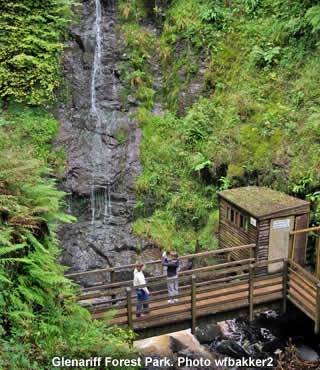 |
|||
Northern Ireland's Garden |
|||||||||||||||||||||
|
|||||||||||||||||||||
Antrim's coastline is by far the county's most famous feature, and it's easy to see why. However, by just taking a step back from the sea you enter a whole new world of trees, waterfalls, marshes and moorland. These are the nine glens, making up 20 square miles in total. |
|||||||||||||||||||||
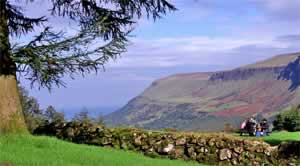 Glenariff. Photo wfbakker2 |
|||||||||||||||||||||
Curious explorers are richly rewarded. Nature has hidden its surprises around every corner, from vast carpets of flowers to secluded woods where the soft trickle of water is never far away. Each glen has its own name and character, and its own unique links to Northern Ireland's history and myth. |
|||||||||||||||||||||
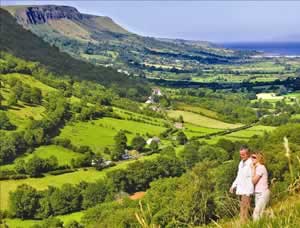 The Antrim Glens. Photo Northern Ireland Tourist Board |
|||||||||||||||||||||
The largest and most famous of the nine is Glenariff, glen of the ploughs. This perfect U-shaped valley has always been a breathtaking sight but, a century ago, it got even better. Hundreds of trees were planted, with the aim of creating as beautiful a location as possible. The best place to begin looking around is at the Glenariff Forest Park. This protected area covers the most spectacular sections of the valley, including three waterfalls and a network of forest trails. A helpful visitor centre provides maps and refreshments. |
|||||||||||||||||||||
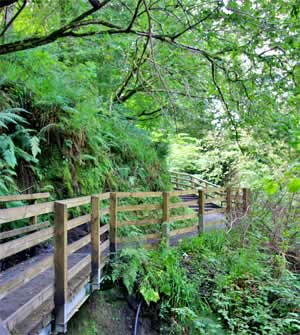 Walkways in Glenariff Forest Park. Photo wfbakker2 |
|||||||||||||||||||||
The southernmost of the valleys is Glenarm, glen of the army. Its castle was the seat of the legendary McDonnell clan, a group of warriors that once ruled over much of Northern Ireland. Leading north from here is Glencloy, glen of the sword. Its name comes from both the valley's dagger shape and its steel-coloured quarries, but it could just as easily refer to the spiky sails and yachts in the nearby Carnlough Harbour. For years, limestone from the quarries was exported by sea, but these days lazy pleasure craft are the only visitors. |
|||||||||||||||||||||
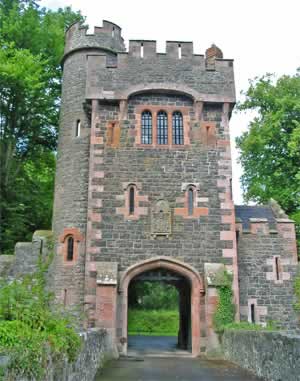 Glenarm Castle Gateway. Photo in the Public Domain |
|||||||||||||||||||||
Close by is Glenballyeamon, glen of Edwardstown. This is where you'll find Cushendall, a small town at the midpoint of the nine valleys. The nearby waterfalls are best viewed after strong rain, when the rivers swell. |
|||||||||||||||||||||
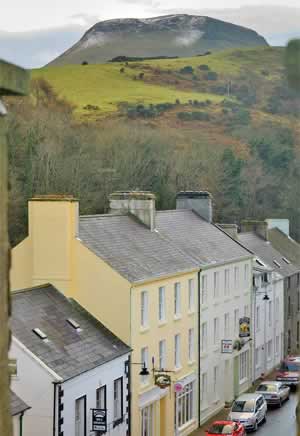 Cushendall. Photo in the totally pixelated |
|||||||||||||||||||||
A little further on, the greenery's beauty becomes tempered by the sad stories of years gone by. At Glenaan, glen of the rush lights, you'll find the grave of Ossian. He was the son of Finn McCool, the monster that built the Giant's Causeway. Next door is Glencorp, glen of the slaughtered. On its east slope is Tiveragh Hill, where the magical creatures of Irish myth are still said to reside. On twilight evenings, lucky passers-by might hear the sound of fairy music echoing out from the trees and caves. Be careful though, because the hill is also home to the mischievous Wee Folk, who have been known to copy the fairys' beautiful song. Travellers follow the enchanting sound into the depths of the caves, and are never heard from again. |
|||||||||||||||||||||
Glendun, glen of the brown river, is known for the huge viaduct spanning its waterways. Glenshesk, the sedgy glen, leads towards Bonamargie Friary, another renowned piece of local architecture. |
|||||||||||||||||||||
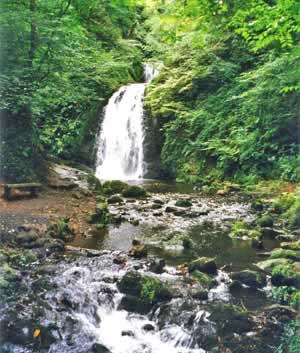 Waterfall in Glendun. Photo in the michael clarke stuff |
|||||||||||||||||||||
The last of the valleys is Glentaisie, named after the ancient princess of Rathlin Island. She married the future King of Ulster, and eventually became Queen of the entire region. |
|||||||||||||||||||||
The nine glens were shaped thousands of years ago by slow-moving glaciers. Since then their slopes have been traversed by all the fictional and historical characters of Ireland's past. Despite its current popularity as a tourist attraction, the place has an unbreakable link with those ancient times. It was one of the last areas of Northern Ireland where the Gaelic language was still spoken. |
|||||||||||||||||||||
|
|||||||||||||||||||||
|
|||||||||||||||||||||
Glenarif Forest Park and unique waterfall walkway is open daily. Visitor centre, exhibition, interactive display, shop, caravan/camping site (open Easter - October) and a seasonal restaurant. Entry costs around £4 per vehicle. On A43 Ballymena to Waterfood road 22km north east of Ballymena, signposted.. Tel: 028 2955 6000 |
|||||||||||||||||||||
Glenarm Castle Garden is open daily, May to September, 10am to 5pm. Entry costs around £5 for adults, £2.50 children. The Castle is open to visitors on certain days only, phone for more information. 2 Castle Lane, Glenarm, Ballymena, Co. Antrim, BT44 0BQ. Tel: 028 2884 1203 |
|||||||||||||||||||||
|
Pocket Britain is optimised for use on a smartphone or tablet with internet access. All content is subject to copyright. All reasonable methods have been used to ensure information supplied is accurate at the time of publication. However, it is advisable to check information before relying on it. Privacy Policy |